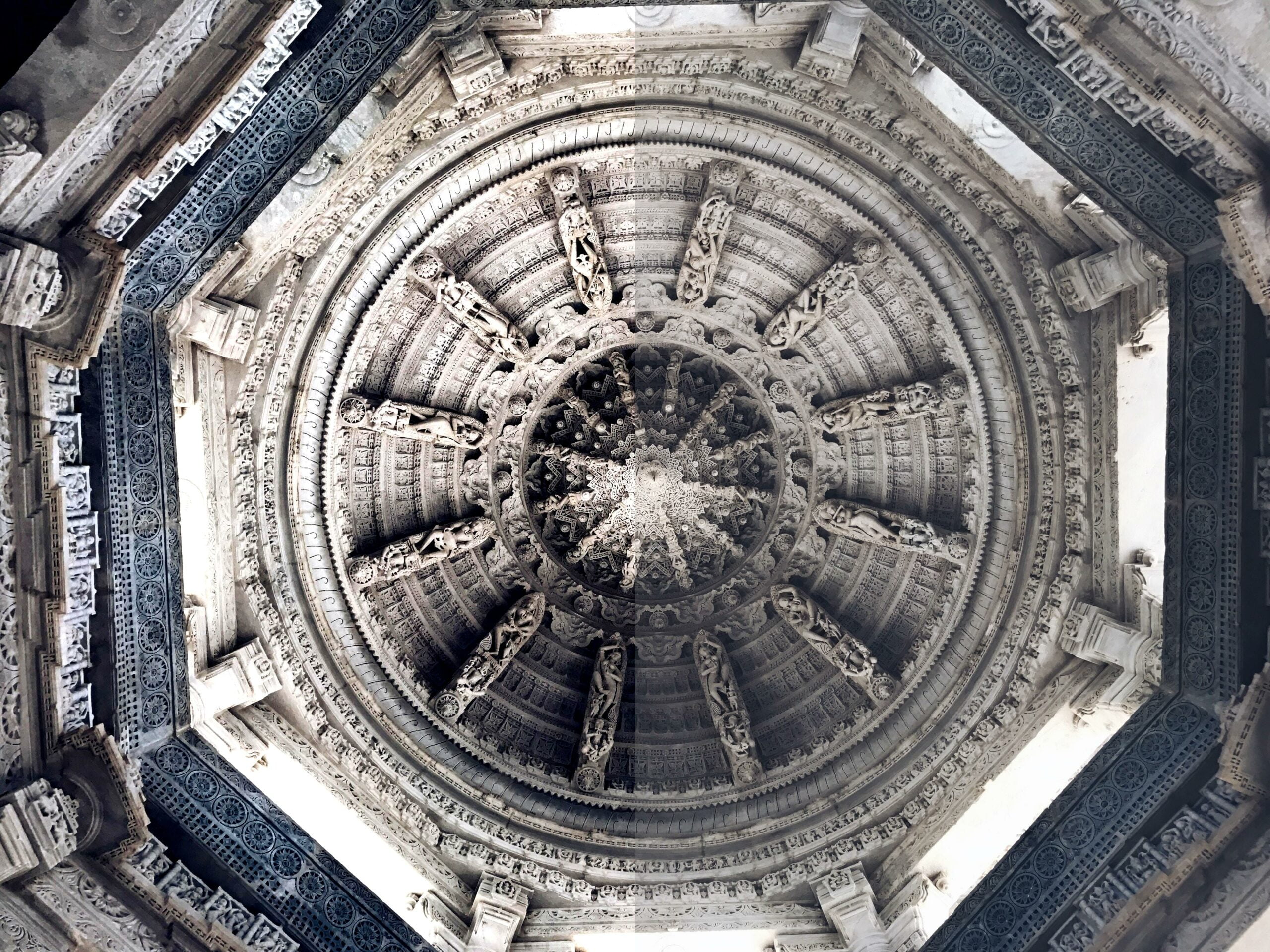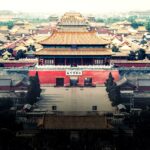Welcome to the captivating world of ancient Chinese buildings and structures, where history, culture, and architectural marvels merge in harmony. In this article, we embark on a journey through time, unveiling the historical significance and cultural relevance of China’s architectural wonders. Delving into the depths of ancient civilizations, we unravel the stories and secrets behind these magnificent structures, transporting you to a bygone era steeped in architectural grandeur. Join me as we explore the enchanting wonders of ancient China’s architectural splendors, bringing to life a rich tapestry of cultural heritage for readers around the globe.
Ancient China Buildings and Structures
In the mesmerizing world of ancient China, where history and culture intertwine seamlessly, stands an array of architectural marvels that have withstood the test of time. These majestic buildings and structures offer a window into the rich tapestry of Chinese civilization, showcasing the ingenuity, craftsmanship, and cultural symbolism of an era long gone. It is through the exploration of these ancient treasures that we unveil the stories and secrets that have shaped the Chinese society we know today.
Unveiling the Magnificence
As our journey of discovery begins, we find ourselves surrounded by an abundance of architectural splendors, each with its own unique tale to tell. From the imposing grandeur of the Forbidden City to the delicate elegance of the Summer Palace, every building and structure encapsulates a distinct chapter of ancient China’s rich history. The walls, the roofs, the intricate carvings, and the symbolism embedded within them all come together to create a vivid tapestry of cultural heritage that beckons us to unravel its secrets.
Secrets of Ancient Technique
To truly appreciate these architectural wonders, we must delve into the fascinating techniques employed by ancient Chinese craftsmen. Remarkably advanced for their time, they devised ingenious methods to construct buildings and structures that could withstand the ravages of nature and the passage of centuries. From the sturdy timber frame construction of the pagodas to the intricate joinery techniques used in traditional Chinese houses, every element speaks to the meticulous craftsmanship and engineering prowess of a civilization that valued both beauty and practicality.
Cultural Symbolism Exposed
Beyond their physical attributes, ancient Chinese buildings and structures are a reflection of the spiritual and cultural beliefs that permeated society. Take, for example, the magnificent Great Wall of China, a testament to the strength and unity of the Chinese empire. Its imposing presence, stretching across vast landscapes, not only served as a defensive barrier but also as a symbol of Chinese identity and territorial dominance. Each intricate detail of these architectural wonders carries profound meaning, inviting us to dive deeper into the cultural significance they hold.
Stepping into the Past
As we immerse ourselves in the world of ancient China’s architectural splendors, we find ourselves transported back in time, walking in the footsteps of emperors, scholars, and artisans. We can’t help but marvel at the intricate stone carvings of the Longmen Grottoes, envisioning the devotion and skill required to create such masterpieces. The sacred halls of the Temple of Heaven evoke a sense of reverence as we imagine emperors offering prayers for bountiful harvests and divine protection. Through these architectural wonders, we glimpse the lives, beliefs, and aspirations of a civilization that has left an indelible mark on human history.
Preserving Heritage for Future Generations
In our modern world, where skyscrapers dominate city skylines and technological advancements shape our daily lives, it is crucial to preserve and honor the heritage of ancient China’s buildings and structures. These architectural treasures connect us to a time when craftsmanship, spirituality, and cultural identity were paramount. By understanding and appreciating the historical significance and cultural relevance of these marvels, we ensure that future generations can continue to be captivated by the stories they hold.
In conclusion, the ancient buildings and structures of China stand as a testament to the country’s rich history and cultural heritage. From the technical mastery to the symbolism embedded within each structure, these architectural wonders offer a glimpse into an ancient world that continues to captivate and inspire. Let us embark on this journey of discovery, unraveling the mysteries of ancient China’s architectural splendors and celebrating the ingenuity of those who came before us. As we delve into this captivating realm, let us remember the words of Confucius, who said, “Study the past if you would define the future.”
Ancient China is known for its magnificent buildings that have withstood the test of time. From the imposing Great Wall to the exquisite Forbidden City, these architectural wonders are a testament to the ingenuity and craftsmanship of the ancient Chinese civilization. If you’re fascinated by ancient China buildings, you won’t want to miss exploring our comprehensive collection at Ancient China Buildings. Step back in time and immerse yourself in the rich history and cultural significance of these remarkable structures. Don’t miss out on this extraordinary opportunity to delve into the captivating world of ancient China architecture. Click here to start your journey now!
How China’s Forbidden City Built Earthquake-Proof Palaces
[youtube v=”w78Yb_aotH0″]
The Forbidden City, a remarkable architectural marvel that has withstood over 200 devastating earthquakes in its 600-year history, holds many secrets to its survival. Specialist carpenters and engineers have been working tirelessly to uncover the mechanisms that make this ancient city earthquake-proof.
To better understand the construction techniques employed, a unique scale model of the classic Forbidden City structure was built. Using traditional carpentry tools and methods, this 1/5 scale model was carefully constructed to replicate the original design as accurately as possible. The engineers then subjected it to a series of tests on a shake table, simulating earthquake forces tailored to the size and weight of the model.
The core of the Forbidden City’s buildings lies in its beams and columns. These structural elements play a crucial role in supporting the entire complex. The roof, held up by large beams, is also supported by intricate Dogon brackets. These flower-shaped brackets extend from the crossbeams, not only providing support to the eaves but also maintaining the stability of the roof.
One fascinating feature of the Forbidden City’s architecture is that the columns do not rest on the ground. Instead, they are built on a platform. This design choice allows for flexibility and mobility when the earth shakes beneath the city. The seismic tests conducted on the scale model revealed something astonishing: the buildings can withstand earthquakes of significant magnitudes.
Even a 9.0 magnitude earthquake, considered extremely powerful, barely threatens the structural integrity of the Forbidden City. Astonishingly, it was found that the city could withstand a quake as strong as 10.1 on the Richter scale. This remarkable flexibility and resilience are a testament to the genius and ingenuity of Chinese traditional architecture.
The Forbidden City’s earthquake-proof design is a shining example of advanced techniques employed by ancient Chinese craftsmen. Through their craftsmanship and meticulous attention to detail, they created a structure that could withstand the ravages of time and nature. Moreover, these architectural wonders provide a window into the past, reflecting the spiritual and cultural beliefs of ancient Chinese society.
Preserving and honoring these architectural treasures is not only a matter of historical value; it is also crucial to connecting with the rich history and cultural identity of China. Each building and structure within the Forbidden City tells a unique story and offers insights into the lives and aspirations of emperors, scholars, and artisans from the past.
As we delve deeper into the secrets of China’s Forbidden City, we gain a greater appreciation for the extraordinary achievements of ancient Chinese architecture. The earthquake-proof palaces are a testament to the skill, craftsmanship, and cultural significance of these architectural wonders.
“This is a fabulous proof of the genius of Chinese traditional architecture.” – Dr. Joe, Forbidden City Seismologist
FAQ
Question 1: What are some famous ancient Chinese buildings and structures?
Answer 1: Some famous ancient Chinese buildings and structures include the Great Wall of China, the Forbidden City, the Temple of Heaven, the Terracotta Army, and the Summer Palace. These architectural marvels showcase the rich cultural heritage and historical significance of ancient China.
Question 2: How were ancient Chinese buildings constructed?
Answer 2: Ancient Chinese buildings were constructed using traditional architectural techniques. They often incorporated wooden framework and joinery, with careful attention to symmetry and balance. Stone and brick were commonly used for the foundations and walls, while exquisite roof tiles and decorative elements added intricate details to the structures.
Question 3: What cultural symbolism can be found in ancient Chinese buildings?
Answer 3: Ancient Chinese buildings are often imbued with cultural symbolism. For example, the use of specific colors, such as red and yellow, symbolize good luck and prosperity. The presence of dragon motifs on roofs represents imperial power, while the phoenix symbolizes auspiciousness and beauty. These symbolic elements reflect the spiritual beliefs and cultural values of ancient Chinese society.
Question 4: How have ancient Chinese buildings influenced modern architecture?
Answer 4: Ancient Chinese buildings have had a significant impact on modern architecture. Their architectural techniques, such as the use of wooden structures and courtyard layouts, have been incorporated into contemporary building designs. Traditional Chinese motifs and decorative elements can also be found in modern buildings as a way to reference and pay homage to the country’s rich architectural heritage.
Question 5: Why is it important to preserve ancient Chinese buildings and structures?
Answer 5: Preserving ancient Chinese buildings and structures is crucial for several reasons. Firstly, they serve as tangible links to the past, allowing us to understand and appreciate the historical and cultural development of China. Secondly, they are valuable educational resources, providing insights into ancient architectural techniques and craftsmanship. Lastly, these structures are an integral part of China’s cultural identity and contribute to the country’s tourism industry, attracting visitors from all over the world to experience its architectural splendors.
- What is a Bunch of Deer Called? A Complete Guide to Deer Group Names - April 16, 2025
- Is a Bird an Animal?Science Explains Avian Classification - April 16, 2025
- The Peasant St John Gastropub: London’s Hidden Gem - April 16, 2025
















